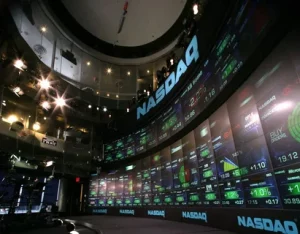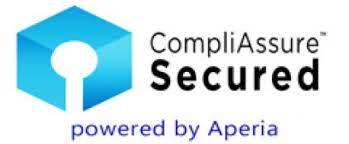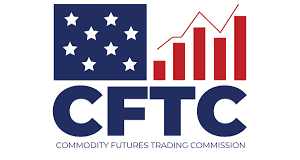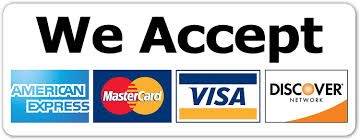
In the ever-evolving world of finance and trading, it is crucial to stay informed about the latest investment opportunities. One such opportunity is Micro Nasdaq Futures, a derivative instrument that allows traders to speculate on the performance of the Nasdaq Composite Index. In this article, we will delve into the various aspects of Micro Nasdaq Futures, including tick value, charting, symbols, contract specifications, trading hours, and the exchange where these futures are traded.
Tick Value:
The tick value of Micro Nasdaq Futures refers to the minimum price movement of the contract. Each tick represents a specific monetary value, which may vary depending on the prevailing market conditions. For Micro Nasdaq Futures, the tick value is $0.50. This means that for every tick movement in the price, a trader’s profit or loss changes by $0.50.

Chart:
Analyzing price movements and patterns is an essential part of trading. Traders can easily access Micro Nasdaq Futures charts through various financial platforms and trading software. These charts provide real-time data, allowing traders to monitor the market, identify trends, and make informed trading decisions.
Barchart Symbol:
The Barchart symbol is a unique identifier assigned to each futures contract. For Micro Nasdaq Futures, the Barchart symbol is MNQ. Traders can use this symbol to search for and track specific futures contract on their preferred Automated trading platforms.
Exchange Symbol:
In addition to the Barchart symbol, Micro Nasdaq Futures also have an exchange symbol. The exchange symbol represents the futures contract on the exchange where it is traded. For Micro Nasdaq Futures, the exchange symbol is NQ.
Contract:
A futures contract is a legally binding agreement to buy or sell an asset, in this case, the Nasdaq Composite Index, at a predetermined price and date in the future. Micro Nasdaq Futures contracts are standardized agreements that facilitate efficient trading in the market. These contracts are regulated and overseen by the designated exchange.
Contract Size:
The contract size refers to the specific quantity of the underlying asset represented by a single futures contract. For Micro Nasdaq Futures, the contract size is one-tenth (1/10) of the Nasdaq Composite Index. This allows traders with smaller capital to participate in the market, as they can trade a fraction of the value of the full-sized Nasdaq futures contract.
Months:
Micro Nasdaq Futures contracts have specific expiration months. These contracts are listed for trading on a quarterly cycle, with expirations in March, June, September, and December. Traders can select the contract that aligns with their trading strategies and investment goals.

Trading Hours:
Micro Nasdaq Futures trading hours provide ample opportunities for traders to participate in the market. The trading session for these futures contracts typically begins on Sundays at 6:00 p.m. Eastern Time (ET) and continues until Fridays at 5:00 p.m. ET. However, it is important to note that trading hours may vary during holidays or special circumstances, so it is advisable to check with the exchange or trading platform for accurate information.
Exchange:
Micro Nasdaq Futures are traded on the Chicago Mercantile Exchange (CME), one of the world’s largest and most reputable derivatives exchanges. The CME provides a regulated and transparent marketplace for traders to engage in Micro Nasdaq Futures trading. As an established exchange, it offers robust liquidity, tight bid-ask spreads, and efficient order execution.
Margin Requirements:
When trading Micro Nasdaq Futures, it is important to understand the concept of margin requirements. Margin refers to the initial deposit required by the broker to open a futures position. The margin requirements for Micro Nasdaq Futures are typically lower compared to the full-sized Nasdaq futures contract. These requirements may vary based on factors such as market volatility, regulatory guidelines, and the broker’s policies. Traders should ensure they meet the margin requirements to maintain their positions in the market.
Micro Futures List:
The Micro Futures List comprises various futures contracts that allow traders to participate in the market with smaller contract sizes and reduced capital requirements. The list includes Micro E-mini contracts for major indices such as the S&P 500, Nasdaq-100, Dow Jones Industrial Average, and Russell 2000. These Micro Futures contracts provide traders with more flexibility and accessibility to the futures market, catering to a wider range of investors.
Micro E-Mini Futures:
Micro E-Mini Futures are smaller-sized contracts that provide exposure to the performance of major stock market indices. They offer a cost-effective way for traders to enter and exit positions in the market. Micro E-Mini Futures are one-tenth the size of their E-Mini counterparts, making them attractive to traders with limited capital. They provide an opportunity to participate in the stock market’s movements without the need for substantial investment.
Ticker:
In the world of futures trading, a ticker symbol is used to represent a specific futures contract. Ticker symbols are alphanumeric codes that identify the contract and can be used to place orders or track positions. For Micro E-mini Nasdaq-100 Futures, the ticker symbol is NQ. Traders can enter this symbol when placing trades or searching for relevant market data on their trading platforms.
Value of One Futures Unit:
The value of one futures unit refers to the monetary worth of a single contract. For Micro E-mini Nasdaq-100 Futures, the value of one futures unit can be calculated by multiplying the index value by the multiplier. The multiplier for Micro E-mini Nasdaq-100 Futures is $2. Therefore, if the Nasdaq-100 index is trading at 15,000 points, the value of one futures unit would be $30,000 (15,000 x $2).
Value of One Options Unit:
While options contracts are not directly related to Micro Nasdaq Futures, it is worth mentioning the value of one options unit for a comprehensive understanding of derivatives trading. The value of one options unit depends on factors such as the underlying asset, strike price, time to expiration, and implied volatility. Each options contract typically represents a fixed number of shares or futures contracts. Traders can calculate the value of one options unit by multiplying the options premium by the contract multiplier.
Micro E-mini Nasdaq-100 Futures Price:
The price of Micro E-mini Nasdaq-100 Futures is determined by market forces of supply and demand. It represents the market’s consensus on the expected future performance of the Nasdaq-100 index. Traders can monitor the futures price in real-time through their trading platforms, enabling them to make timely trading decisions based on market movements and trends.
Last Trading Day:
The last trading day refers to the final day on which traders can open or close positions in a specific futures contract before it expires. For Micro E-mini Nasdaq-100 Futures, the last trading day falls on the third Friday of the contract month. It is important for traders to be aware of the last trading day to manage their positions effectively and avoid any unexpected consequences related to contract expiration.
FAQs (Frequently Asked Questions):
Q: Can I trade Micro Nasdaq Futures as an individual investor?
A: Yes, Micro Nasdaq Futures are accessible to individual investors. They offer an opportunity to participate in the performance of the Nasdaq Composite Index with smaller contract sizes, making them more affordable and manageable for individual traders.
Q: How do I start trading Micro Nasdaq Futures?
A: To start trading Micro Nasdaq Futures, you need to open an account with a brokerage firm that offers futures trading. Once your account is open, you can deposit funds and familiarize yourself with the trading platform. It is recommended to educate yourself about futures trading, risk management, and market analysis before getting started.
Q: What are the advantages of trading Micro Nasdaq Futures?
A: Trading Micro Nasdaq Futures has several advantages. Firstly, the smaller contract size allows traders with limited capital to participate in the market. Additionally, the reduced tick value and margin requirements make it more accessible for individual investors. Moreover, Micro Nasdaq Futures provide exposure to the performance of the Nasdaq Composite Index without directly owning the underlying assets.
Q: Are there any risks involved in trading Micro Nasdaq Futures?
A: Yes, like any investment, trading Micro Nasdaq Futures involves risks. The value of the futures contract can fluctuate, resulting in potential gains or losses. It is crucial to have a solid understanding of risk management techniques, use appropriate trading strategies, and conduct thorough market analysis before entering into any futures trade.
See Our – Why use an Automated Trading System ATS
See Our Limited Time “Promo Offer” and see how you can become our Client!














